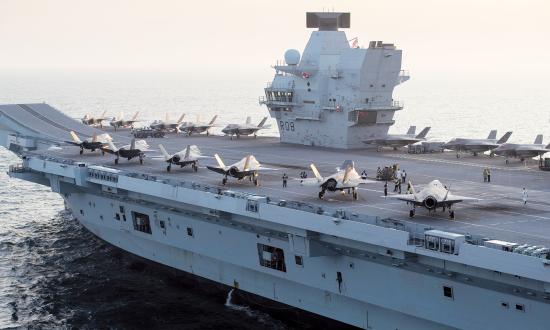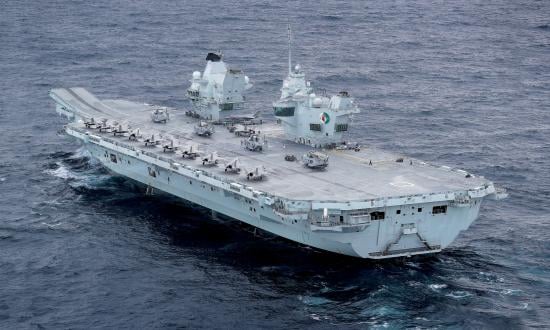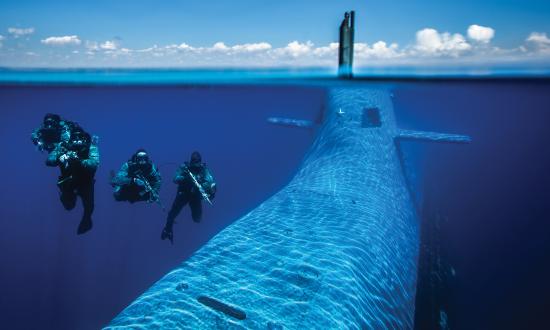The United Kingdom (UK) just released Global Britain in a Competitive Age (a.k.a “The Integrated Review” or IR) and its companion piece, Defence in a Competitive Age (a.k.a. “The Defence Command Paper” or DCP). Both are well written and comprehensive. The IR has seven major aims: ensure a stronger, more secure, prosperous and resilient nation; focus on problem solving and burden sharing; create a new foundation for prosperity; adapt to a more competitive world with an integrated whole-of-government approach; sustain strategic advantage through science and technology; shape an open international order; and strengthen security and defense at home and overseas.
Four specific directions of the IR are important to underscore, of which the first two are very ambitious. The UK seeks to become both a soft-power and a science-and-technology superpower. Next, the government will create a Counter Terrorist Operations function. And last, it will form a National Cyber Force with assets from the Government Communications Headquarters (GCHQ), the Ministry of Defense (MoD), and the various intelligence services, to report to the Foreign Minister and the Defense Minister.
The DPC, 76-pages long, calls for a future military that is focused, modernized, financially stable, and made resilient largely through a “digital backbone” that will securely and reliably link all elements of the forces with command, control, surveillance, and intelligence in an increasingly complicated, lethal future battle field. To accomplish this, the current Chief of Defense, General Sir Nick Carter, is calling for a change in “strategic culture” to bring the lessons of the battlefield to the bureaucracy and the ability to move at the rate of relevant modernization—implying speed and flexibility.
Much of the DPC stems from the 2020 Integrated Operational Concept that made a profound distinction between “operating” (carrying out daily assignments on deployments) and “war fighting.” The Concept called for bringing the culture of the latter to how the military operates on a day-to-day basis.
One benefit the UK MoD will have over the Pentagon is that the increase in five-year spending by 24 billion pounds offers a firm fiscal foundation for long-range planning until 2030. This form of budgetary stability is something the Pentagon has not had in decades and is one of the major causes of inefficiency and cost growth. It is unfortunate that the U.S. Department of Defense will not learn from that experience given the Constitution’s two-year spending limits.
Compared with the 2017 U.S. National Security Strategy and the 2018 National Defense Strategy, the IR and DPC have far wider apertures that reach across all of government and much of the private sector. The aims of soft power and becoming an S&T superpower are prime examples. The DPC also specifically calls for all-of- government participation in overseas presence to complement military deployments as well as upgrading the defense attaché programs to higher status.
Unlike the U.S. strategic documents, the IR and DPC do not call for a military to “deter and defeat” China or Russia. Competing is a task, however, as is the overall aim of deterrence. Recognizing the presence of a more powerful China, a “tilt” (not a “pivot”) to Asia is to be undertaken. Both documents emphasize the need for a “prosperous” nation, far more than the U.S. strategies and call for closer integration with the private sector.
In offering an evaluation of the IR and DPC, Winston Churchill is relevant. Churchill disliked a certain pudding because he thought “it lacked a theme.” His complaint applies in several ways to both documents. First, there is no overall theme. Instead, the IR has many different aims, goals, and aspirations. Hence, it is hard to discern the priorities and tradeoffs. Without explaining or understanding the priorities and tradeoffs, a strategy is hindered because nearly unlimited resources are needed to fulfill boundless objectives and aspirations.
Perhaps most important, what is the strategy to implement the aims, objectives, and aspirations of both papers—as worthy as they may be? Answers to these questions will determine the impact and consequences of these initiatives that could prove as significant as the British decision in 1968 to depart East of Suez.
The overall aim to create a stronger, more secure, prosperous, and resilient nation, and the six other major aims, are well put and unobjectionable. But the hard part is how to do it in a fully integrated manner when the very nature of a pluralistic society and government bureaucracies and fiefdoms are powerful antibodies to coordination and prioritization—especially when money is involved.
For the Integrated Review, the NSC and the National Security Advisor are designated as the integrators. Annex A in the IR lists specific funding that has been dedicated for the specific areas that form the foundations for a more secure and prosperous “Global Britain.” But no specifics are offered as to how the IR will be fully integrated and monitored to ensure the appropriate actions and follow up are taken. One hopes Number Ten Downing Street has or will set in train the mechanisms for both.
Similarly, for the Ministry of Defense, how a threat-focused, modernized, and financially sustainable force will follow relies on the current chain of command and organization. But, for example, with the establishment of the new National Cyber Force and Counter-Terrorism Operation, are the current MoD and NSC structures fit for purpose, or are changes necessary? And with a new Chief of Defense likely to be selected later this year, where is the continuity on the military side for ensuring the DPC is implemented and the battlefield strategic culture transplanted into Whitehall?
The DPC, however, does suggest how integration may be achieved in the MoD. The implementer is Strategic Command, the follow-on to the UK Joint Forces Command. The Commander, General Sir Patrick Sanders, succinctly defined Strategic Command’s role in mid-March: “From our headquarters in Northwood, Strategic Command brings together everything that integrates the armed forces—the enabling information age technologies, cyberspace, space (with the RAF), Intelligence, Special Forces, our force design brain and the underpinning support base.”
The emphasis on building economic strength, turning Britain into a superpower scientific and technological nation, and a “soft-power superpower” likewise are powerful ideas. But where does Treasury fit in along with fiscal, monetary, and regulatory policies that may need legislation to promote this accession to superpower status beyond paying the bills?
One theme to help focus both the IR and DCP is that the major challenge is now in the form of disruption. I call this the new MAD—Massive Attacks of Disruption, whether caused by man or nature. The COVID-19 pandemic; the violent winter weather that turned off the power in Texas (one of the energy-richest regions in the world); and the SolarWind cyberattacks are unmistakable harbingers of the new MAD. The grounding of the giant ship Ever Given, blocking the Suez Canal, surely reinforces the power of MAD to affect international commerce. Russian “active measures” aim to disrupt, disunite, and sow chaos in the West; and China’s aggressive diplomacy, IP theft, militarization of the contiguous seas, and intimidation of neighbors likewise are state forms of MAD.
Without priorities, no strategy can work because infinite resources are needed. What are the long-term costs and benefits? Have these been examined? This especially applies to the notion of enhanced and imaginative presence—regardless of which ministry may be represented—is an idea long overdue. The Integrated Operational Concept that distinguishes between operating and warfighting should have long-term impact on force design and deployments, especially with a cut of about 7,500 land forces and the possibility of reducing the F-35 buy from the current plan for 138 aircraft.
Finally, relatively unaddressed in the IR are the preferred outcomes the UK seeks with its “tilt” to Asia vis-a-vis China and Russia. While the U.S. strategy is “to compete, deter, and if war comes, defeat” a range of adversaries topped by China and Russia in what could be a nuclear conflagration, how the United States is to achieve those aims is vague. The UK could fall into the same trap.
The IR and DCP are thorough, well thought out and researched documents that set the foundations for what is needed to assure the United Kingdom’s security and prosperity. But the next and most vital step is implementation. Without proper execution, the best plans are insufficient to guarantee the best or even acceptable results.
It will be interesting to see how the UK government and Parliament react to the IR and DCP and what actions they will take to ensure that these reviews are fully and effectively implemented.







